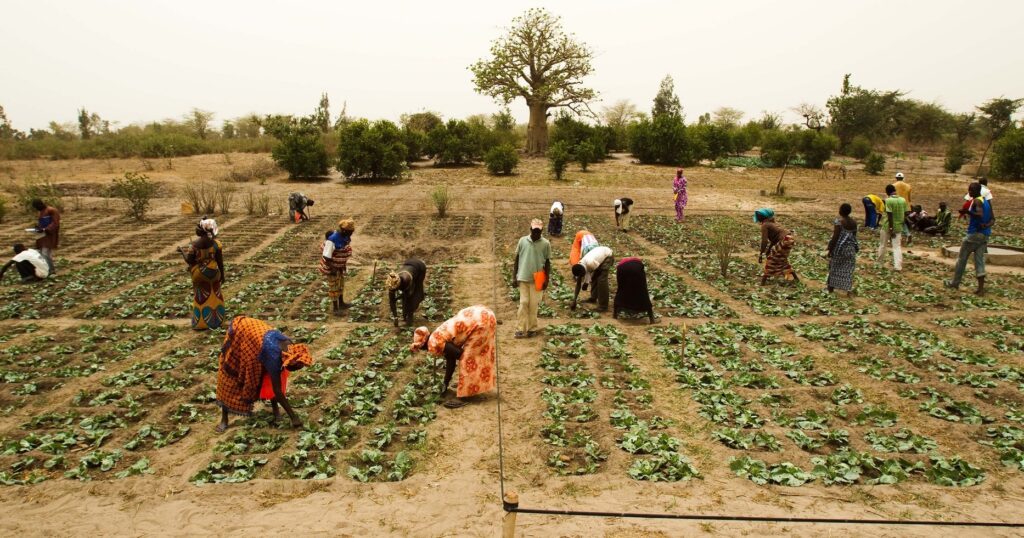Ensuring that there is input from both men and women in agricultural decision-making is highly important. This is due to the fact that men tend to own the majority of agricultural lands while women perform the bulk of the agricultural activities on these lands. At the household level of agricultural production, the decision-making is predominantly done by men except for the cases of female-headed households. Male farmers take over crop production, management, and income use decisions, and across all rural areas, the domination of older men in community dialogue is severe. This subsequently causes the exclusion of youths and women from decision processes. For instance, in Zambia, in groundnut production, only 34.8 percent of women growers in male-headed households make market decisions on their produce. In livestock production, most decisions relating to cattle and smaller stock are made by men. This can inhibit female empowerment greatly as the selling of smaller livestock would be beneficial for generating extra income that could be repatriated toward household expenses. The Transforming Landscapes for Resilience and Development Project in Zambia exclaims how women are less likely to participate in landscape-type management meetings. These could include forest meetings and forest management groups. There are also few women in positions of leadership as they are restricted from receiving management positions in village communities. Here, I will focus on how projects that are ongoing in Kenya, Morocco, Senegal, and Zambia, enhance the opportunities for women to further engage in agricultural decision-making.

Increasing the inclusion of women in agricultural decision-making has proven to be highly beneficial to agricultural production. While men may own the agricultural assets, it is the females of the households that use or maintain these assets. The Towards Ending Drought Emergencies Fund project in Kenya accounts for this by developing plans to ensure that agricultural decision-making is not dominated by men. The Building the Climate Resilience of Food Insecure Smallholder Farmers Project in Senegal involves facilitating women’s meetings every week to keep records in an oral fashion. This meeting (which is run by women) will make decisions on allocating financial loans to women within the community to be utilised for household or agricultural expenditures. This enhances gender empowerment on two fronts as women are given the opportunity to run these meetings and make agriculturally based decisions. It also financially benefits the women who are being granted these loans. Climate change has altered the ways in which water is accessed and distributed in a lot of rural African regions. To alleviate this, the Strengthening Climate Resilience of Agricultural Livelihoods project in Zambia has introduced innovative water technologies through infrastructure and management strategies that account for the differing roles of males and females with regard to water procurement.

The introduction of labor-saving activities for rural women could help to alleviate both on and off-farm burdens and help to contribute time to other facets of life. This can be facilitated through initiatives such as increasing training for rural women and increasing access to agricultural resources for women. Introducing measures like these has shown to significantly increase yields by up to 30% in some cases. It can also enhance the state of child nutrition and household food security as in comparison to men, a higher proportion of female income is generally spent on the care of the household. It can also contribute to women having more time to participate in community groups and organisations which they may not have been able to in the past. The Green Morocco Plan Support Programme integrated a gender-sensitive approach to its project with the hope of improving the productivity of women at household levels and negating possible biases pertaining to economic development and empowerment. To ensure the success of this integration, the use of a gender-disaggregated monitoring system has been adopted to help support this gender mainstreaming. All of these measures can contribute to alleviating gender vulnerabilities and subsequently, grant more opportunities for women to participate in agricultural decision-making.
References:
AFDB 2012. Green Morocco Plan Support Programme. Appraisal Report.
FAO 2018. A successful model to engage Senegalese youth in agriculture [online] Available at: <https://www.fao.org/rural-employment/resources/detail/fr/c/1120663/
GCF 2017. Building the Climate Resilience of Food Insecure Smallholder Farmers Through Intergrated Management of Climate Risks (the R4 Resilience Initiative). Funding Proposal
GCF 2018. Strengthening climate resilience of agricultural livelihoods in AgroEcological Regions I and II in Zambia. Funding Proposal.
GCF 2019b. TWENDE: Towards Ending Drought Emergencies: Ecosystem Based Adaptation in Kenya’s Arid and SemiArid Rangelands. Funding Proposal
IFAD 2016. Enhanced-Smallholder Agribusiness Promotion Programme Zambia. Final Programme Design Report.
WORLDBANK 2016. National Agricultural and Rural Inclusive Growth Project. Proposal Appraisal Document.
WORLDBANK 2019. Transforming Landscapes for Resilience and Development Project in Zambia. Project Appraisal Document.
WORLDBANK 2020. Morocco Green Generation Program-For-Results. Program Appraisal Document.